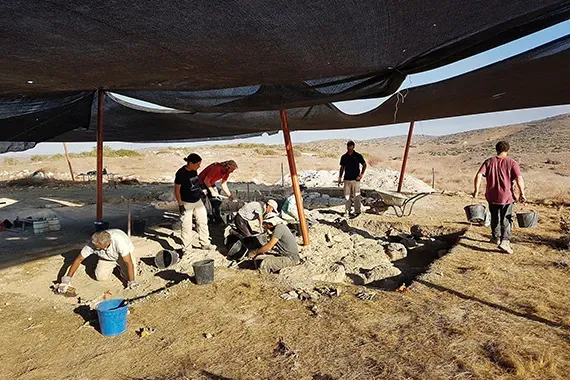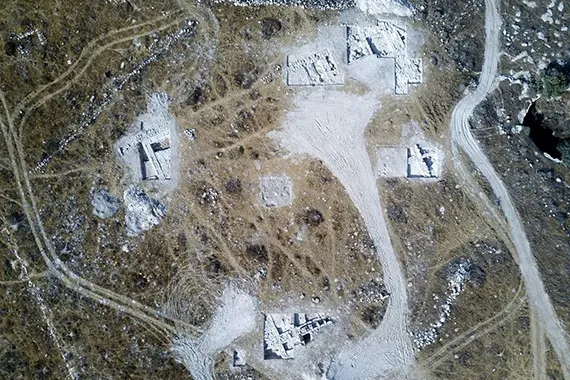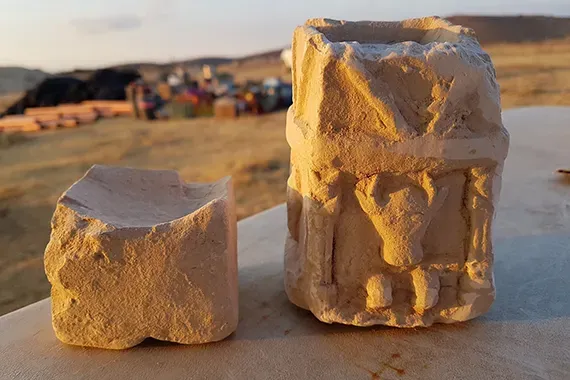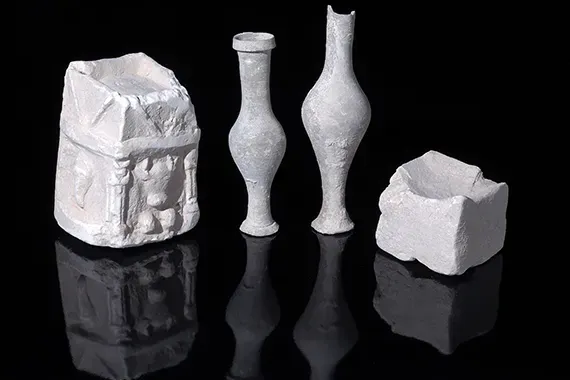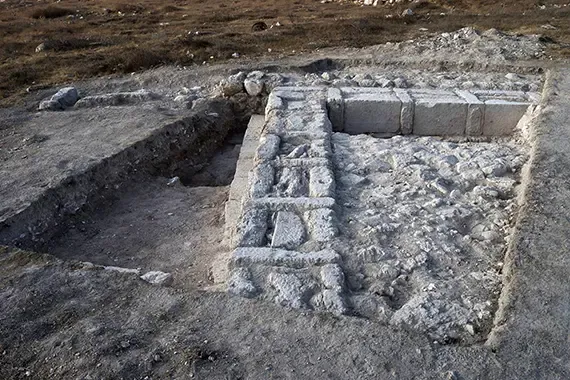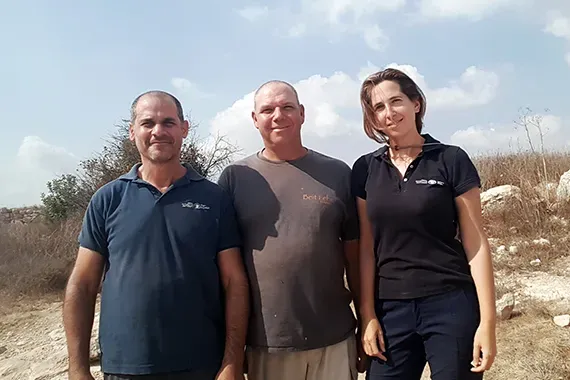Drone survey reveals ancient temple at Israeli military grounds.
In 2015, students from Utah Valley University were the first to use images from drones to create 3D topographical map of Beit Lehi. This 3D map provided archaeologists an unique overhead view and to locate a possible temple site at the north of Hurvat Amuda for the 2017 dig.
When drones buzzed at the heart of a Lachish region military training area this Sukkot, they came up with an unusual find. The camera-equipped aircraft discovered what appeared to be a rare 2,200-year-old Idumean palace or temple — one of only a handful in the country.
In a survey of an area from Beit Guvrin and Maresha in the north to Moshav Amatzia in the south, the drones’ aerial images indicated the possibility of remains of the Hellenistic period structure, which turned up an altar decorated with an image of a bull in relief.
Rare incense altar found in the excavation at the heart of a military training area in the Lachish region: on one side is a bull in relief and on the other is another animal, possibly a horse (Clara Amit, Israel Antiquities Authority)
“This technology helped us choose where to focus our excavation probes, and, indeed, it very quickly emerged that this was in fact a unique discovery,” said the Horvat ‘Amuda excavation directors, Dr. Oren Gutfeld of the Hebrew University, and Pablo Betzer and Michal Haber of the Israel Antiquities Authority, in an IAA release.
“If this was indeed an Idumean palace or temple, it is a rare and exciting find – similar structures in this country can be counted on the fingers of one hand,” said the archaeologists.
In one of the rooms excavated at the site, two stone incense altars were uncovered. The bull adorning one of the altars “may have symbolized a deity worshipped by the Idumeans,” they said. It is standing upon “what is apparently the facade of a temple adorned with magnificent columns,” according to the IAA.
The altar, noted the archaeologists, is “a unique and rare find in terms of its decoration.” Additional findings include painted bowls, juglets and oil lamps made of delicate pottery.
But it appears the Idumean structure was intentionally dismantled, “perhaps during the Hasmonean conquests of the region,” the IAA release said.
In 112 BCE, the Hasmonean king, John Hyrcanus I, razed Maresha, a nearby Idumean stronghold where some 6,000-10,000 people had lived during the Hellenistic era. “Residents are forced to convert to Judaism or leave,” according to a Biblical Archaeology Review article by a previous area excavator, Amos Kloner.
Later, in 40 BCE, “after Rome conquers the Seleucid empire, the Parthians (allies of the Hasmonean leader Antigonus Mattathias) destroy Maresha as part of a campaign against Herod. During the Second Jewish Revolt against Rome in 132–135 CE, residents of nearby Beit Guvrin cut low narrow passages and square rooms at Maresha to serve as hiding and storage places,” according to Kloner.
The area around Horvat ‘Amuda is rife with remains dating from the Jewish revolts against the Romans, including hiding tunnels and a complete cooking pot from the Bar Kochba Revolt, circa 132-135 CE. Additionally, the archaeologists discovered other underground spaces, perhaps used as ritual baths, oil presses, and dovecotes akin to those of nearby Beit Guvrin, or quarries.
The excavation was sponsored by the IAA, the Beit Lehi Foundation, and Utah Valley University. Archaeology students from the Hebrew University and Bar-Ilan University as well as students from the Architecture and Engineering Design Department and Digital Media Department at Utah Valley University participated.
“We hope that our continued excavation of the site in the spring will uncover more of the story told here,” said the archaeologists.
